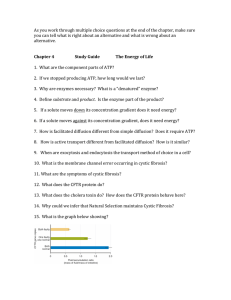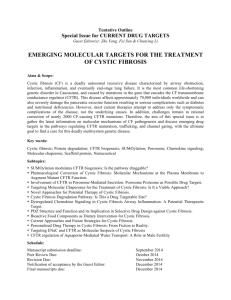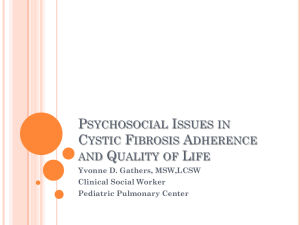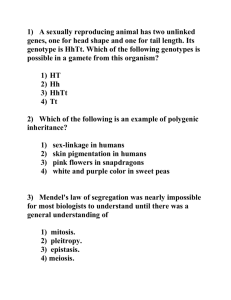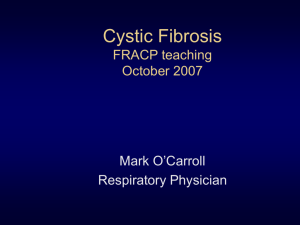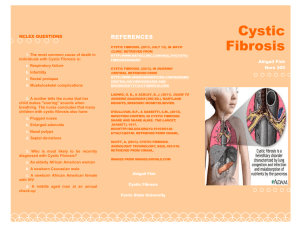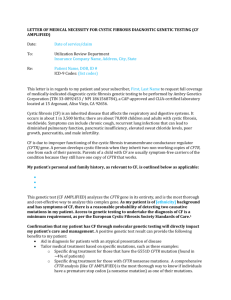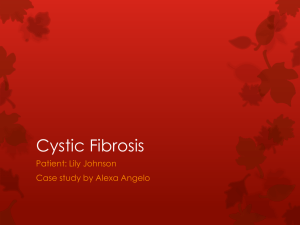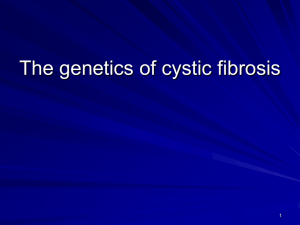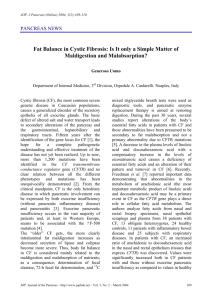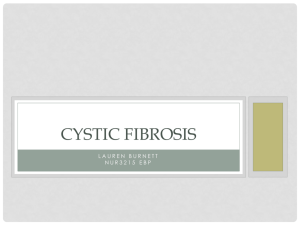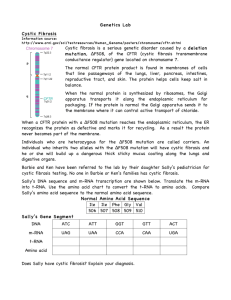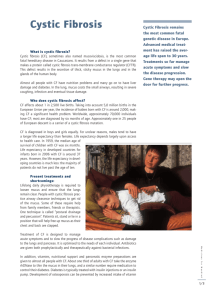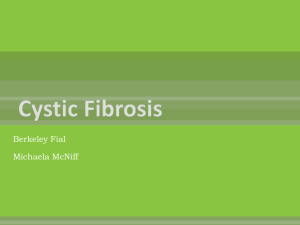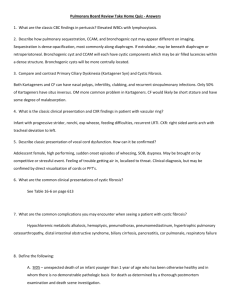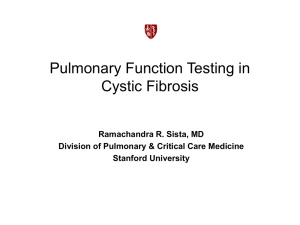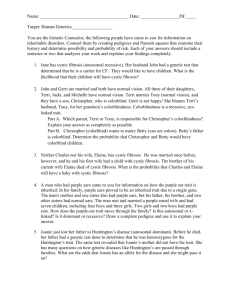- Flintbox
advertisement
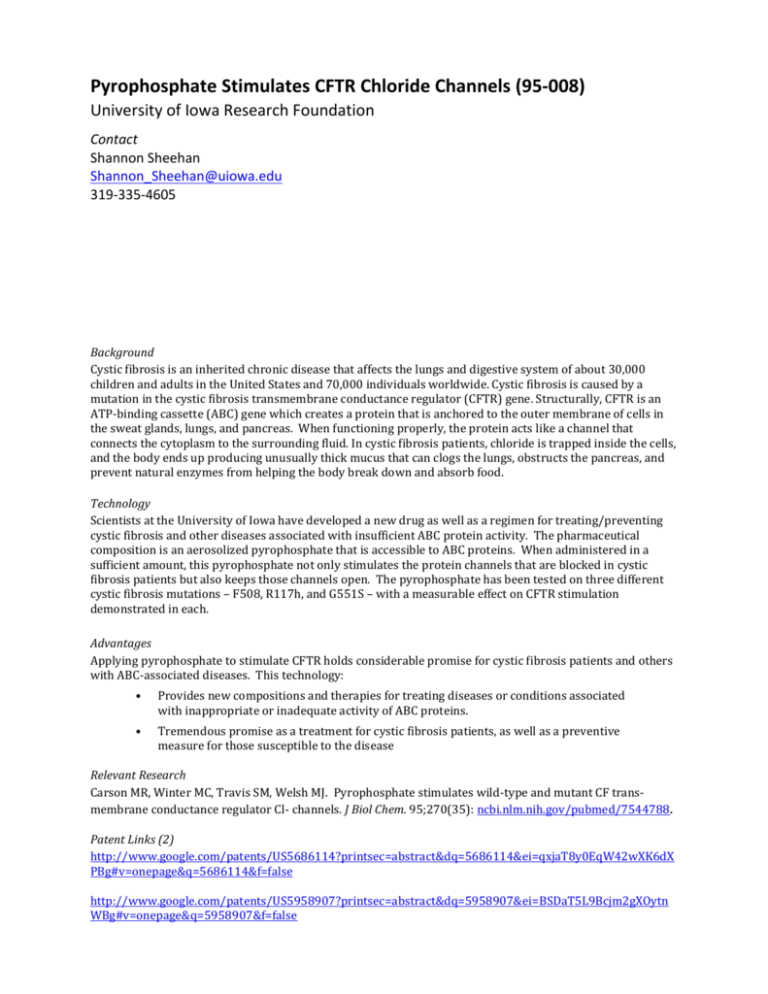
Pyrophosphate Stimulates CFTR Chloride Channels (95-008) University of Iowa Research Foundation Contact Shannon Sheehan Shannon_Sheehan@uiowa.edu 319-335-4605 Background Cystic fibrosis is an inherited chronic disease that affects the lungs and digestive system of about 30,000 children and adults in the United States and 70,000 individuals worldwide. Cystic fibrosis is caused by a mutation in the cystic fibrosis transmembrane conductance regulator (CFTR) gene. Structurally, CFTR is an ATP-binding cassette (ABC) gene which creates a protein that is anchored to the outer membrane of cells in the sweat glands, lungs, and pancreas. When functioning properly, the protein acts like a channel that connects the cytoplasm to the surrounding fluid. In cystic fibrosis patients, chloride is trapped inside the cells, and the body ends up producing unusually thick mucus that can clogs the lungs, obstructs the pancreas, and prevent natural enzymes from helping the body break down and absorb food. Technology Scientists at the University of Iowa have developed a new drug as well as a regimen for treating/preventing cystic fibrosis and other diseases associated with insufficient ABC protein activity. The pharmaceutical composition is an aerosolized pyrophosphate that is accessible to ABC proteins. When administered in a sufficient amount, this pyrophosphate not only stimulates the protein channels that are blocked in cystic fibrosis patients but also keeps those channels open. The pyrophosphate has been tested on three different cystic fibrosis mutations – F508, R117h, and G551S – with a measurable effect on CFTR stimulation demonstrated in each. Advantages Applying pyrophosphate to stimulate CFTR holds considerable promise for cystic fibrosis patients and others with ABC-associated diseases. This technology: • Provides new compositions and therapies for treating diseases or conditions associated with inappropriate or inadequate activity of ABC proteins. • Tremendous promise as a treatment for cystic fibrosis patients, as well as a preventive measure for those susceptible to the disease Relevant Research Carson MR, Winter MC, Travis SM, Welsh MJ. Pyrophosphate stimulates wild-type and mutant CF transmembrane conductance regulator Cl- channels. J Biol Chem. 95;270(35): ncbi.nlm.nih.gov/pubmed/7544788. Patent Links (2) http://www.google.com/patents/US5686114?printsec=abstract&dq=5686114&ei=qxjaT8y0EqW42wXK6dX PBg#v=onepage&q=5686114&f=false http://www.google.com/patents/US5958907?printsec=abstract&dq=5958907&ei=BSDaT5L9Bcjm2gXOytn WBg#v=onepage&q=5958907&f=false
